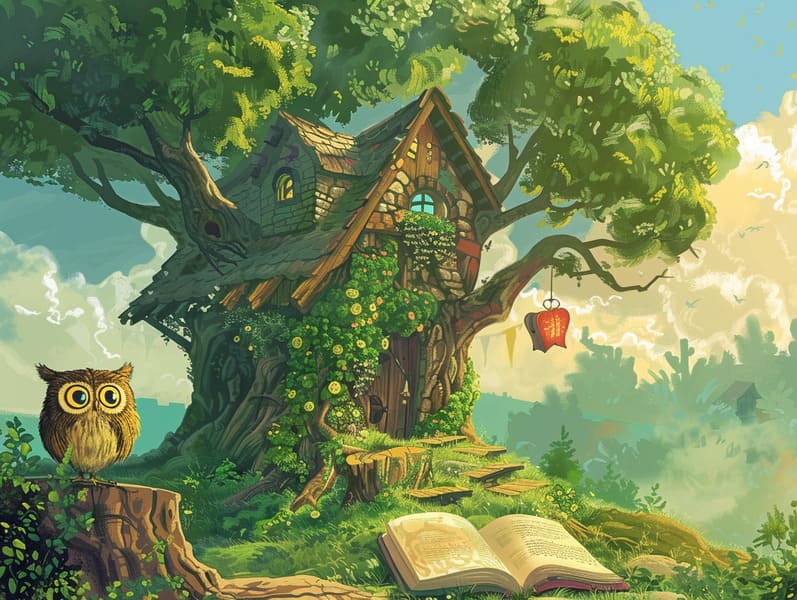The Genesis of Fairy Tales and Its Perpetual Spell.
The Genesis of Fairy Tales and Its Perpetual Spell.
Blog Article

Old fairy tales have enduring presence. These stories have been recounted from one generation to the next far before they were ever put on paper. They developed from a variety of traditions, including African traditions. They were initially transmitted among mature audiences, often carrying themes and messages related to the societal norms and beliefs of the time.
Jacob and Wilhelm Grimm, Jacob and Wilhelm (the Grimm brothers), were among the first to compile many of these beloved tales. Their volume, "Grimm's Story Collection," included classics like "Cinder Maid," "Hansel and Grethel," and "Snow-White and Rose-Red," which have since become pillars in the world of famous fairy tales. Similarly, Hans Christian Andersen's charming stories, such as "The Little Mermaid," and "The Duckling's Story," have stolen hearts worldwide, cementing their place in the pantheon of treasured fairy tales.
Though they are old, these tales remain as significant as ever, especially as kids' bedtime tales. These enchanting tales are now available in diverse formats, including beautifully illustrated books, enchanting animations, and digital storybooks.
Their persistent charm can be credited to several whimsical characteristics:
Vital Lessons: Ancient fairy tales often offer important moral lessons. Fairy tales like "The Boy Who Cried Wolf" teach the significance of honesty, while "The Story of the Tortoise and the Hare" illustrate the merits of perseverance and humbleness. These tales offer young readers clear distinctions between truth and falsehood, forming their moral compass in a kind yet lasting way.
Empathy and Awareness: Classic fairy tales frequently include protagonists facing challenges and problems, inciting audiences to connect with their struggles and back their triumphs. For instance, "Beauty and the Beast" emphasizes the significance of looking beyond appearances to recognize the real person of a individual, encouraging sympathy and comprehension.
Cultural Appreciation: Many old fairy tales are rooted in the cultural contexts from which they grew. Immersing in these fairy tales can provide fascinating glimpses into different customs, nurturing a sense of international awareness and awareness.
Imagination and Innovation: The fanciful elements in old fairy tales—magic wands—revitalize children’s creativity. These stories bring readers to mythical realms, enhancing innovative dreams and a sense of astonishment that remains a lifetime.
Classic fairy tales are not only fantastical but also edifying. They provide fascinating tools in building various brain and heart skills in the young. When timeless fairy tales are told out loud, they cultivate language acquisition by presenting new language and elaborate sentence structures. This practice also strengthens listening skills and attentiveness, as young readers concentrate deeply, anticipating to see what happens next.
Furthermore, discussing the themes and characters of traditional fairy tales can nurture thinking skills and analytical skills. Kids are educated to discover patterns, predict happenings, and figure out cause and effect. These examinations also assist young ones here articulate their thoughts and feelings, fostering their emotional intelligence.
In today’s technological age, the accessibility of digital storybooks has made these tales more reachable than ever. Web-based platforms and web apps provide vast collections of old fairy tales that can be explored or listened on anytime, anywhere. Fairy tales read aloud are particularly popular, sharing an engaging way for little ones to savor these spellbinding stories. Narrated books and narrated videos guide characters and settings to life, often accompanied by whimsical sound effects and musical scores that enhance the story adventure.
The timeless fascination of timeless fairy tales lies in their ability to modify to present eras while keeping their core messages. Contemporary renditions of these tales often present more multicultural figures and modern settings, making them meaningful to today’s audience. However, the fundamental themes of valor, kindness, and equity remain unchanged, continuing to reach readers of all ages.
Old fairy tales also offer a sense of reassurance and closeness. They confer a coherent narrative with a distinct beginning, middle, and end, often finishing with the termination of conflicts and the triumph of right over wrong. This constancy can be solacing for young ones, affording a sense of assuredness in an dynamic world.
Old fairy tales continue to allure and train new generations, maintaining their loveliness and impact in modern society. As children's night stories, they provide a perfect blend of allure and teaching, backing moral values, empathy, and creativity. The abundance of web-based fairy tales and the in demand status of fairy tales narrated assure that these ancient stories remain attainable to new generations.
By perpetuating and making known these stories, we continue to celebrate the rich tapestry of storytelling and cultural heritage. Whether you are discovering a vividly illustrated book, enjoying a online collection, or listening to an sound book, the appeal of famous fairy tales is always within reach. These stories teach us of the timeless effect of tales and its ability to unify us across time and space.
Even if you are seeing a artistically illustrated book, enjoying a electronic library, or listening to an audiobook, the spell of ancient fairy tales is always within reach.
These tales remind us of the immortal influence of narratives and its ability to draw us together across epochs and places, weaving a spell that charms and informs alike.